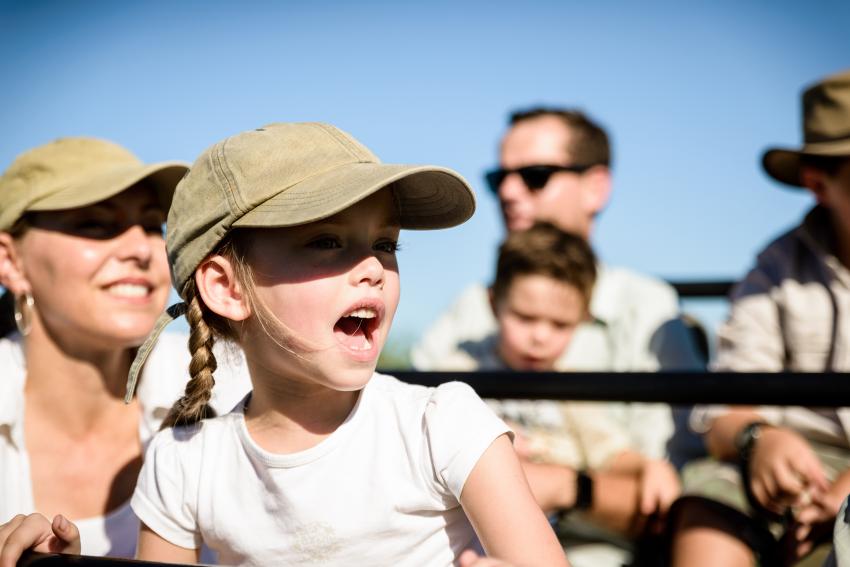Once you start getting your gear together for an African safari, you’ll pretty soon realise that it’s a completely different ball game to other holidays you might have been on. There’s no need for the designer dresses or casual loungewear that you might pack for a resort vacation and you can definitely leave that 30-kilogram hard suitcase behind!
So what exactly should you be packing for Kenya or Tanzania safaris? In this guide, we’ll share with you what you need (and what you can leave behind) so you get it just right!
The luggage
First and foremost, you want to invest in a soft and lightweight duffel bag to carry all your gear, rather than a hard suitcase with wheels. The small aircraft that will whisk you between major cities and remote lodges for your luxury safari in Tanzania have strict luggage weight limits, anywhere from 10 kilograms to 20 kilograms. They’re not designed for hard shell suitcases that take up a lot of space, with soft-sided duffel bags being much easier to squeeze into their tight spaces and narrow overhead compartments. Also, avoid bags with wheels, which will immediately add valuable (and unnecessary) weight that could otherwise be used for clothes.
If you’re worried about the security of your belongings, you should have your bags plastic wrapped before your flight and/or secured with a decent luggage lock. Never pack valuables into your checked-in luggage but keep them in your carry-on, just in case your bags go missing or are held up by the airline.
Your carry-on luggage should also contain any medications your require and all documentation, such as passports, travel insurance policies and booking receipts. If you’re going gorilla trekking after your private safari in Tanzania, make sure your carry-on bag is a backpack, as you’ll need it out in the jungle!
The clothes
Safari clothing values comfort and practicality over design and style, so pack lightweight garments that can be layered on and off. You’ll probably experience quite dramatic changes in temperature between the cool of the morning, the heat of the middle of the day and the chill of nights. Look for quick-dry clothing that’s designed for the great outdoors and can be washed one evening, then ready to wear the next day.
Neutral colours such as beige, green and brown are preferable as they’ll camouflage you in the bush, with khaki a Serengeti safari favourite as it hides dirt well. If you’re visiting areas that are prone to tsetse fly, avoid wearing blue as it attracts these disease-carrying insects. Keep in mind that most safari camps and lodges will provide laundry services, so you only need three or four outfits at the most.
Remember to pack long-sleeve shirts and pants that will protect you not only against the sun but also the mosquitoes that often come out in the evenings. You’ll also need a windbreaker or fleece for night game drives and a hat that won’t blow off in the wind when you’re travelling in safari vehicles. A bandana that can be dipped in water and wrapped around your neck will come as a welcome refreshment if you’re out and about during the heat of the day.
When it comes to shoes, one pair of lightweight walking shoes with good tread will do the job but avoid bright whites or neon-coloured trainers. If you’re going gorilla trekking, then you’ll need a good pair of waterproof hiking boots (preferably ones that are already broken in), as well as gaiters to wrap around your ankles and lower legs.
Clothes packing guide
- 3-4 t-shirts
- 2 long-sleeve shirts
- 1 sweatshirt or fleece
- 1 lightweight raincoat
- 1 pair of shorts
- 2 pairs of cotton pants (with zip-off legs are ideal)
- 3 pairs of socks
- 4 pairs of underwear
- Sports bra for women (on the bumpy roads!)
- Pyjamas or sleepwear
- 1 pair of sunglasses with UV protection
- 1 sunhat
- 1 beanie
- 1 bathing suit
- 1 pair of walking shoes or lightweight hiking boots
- 1 pair of flip-flops for wearing around camp
Toiletries and First Aid
Aside from clothing for your Tanzania safari, you need to consider other essentials, such as toiletries, any medication and a First Aid kit. Every safari camp or lodge will have its own First Aid kit (and most safari vehicles will too) but it’s a good idea to bring your own supply of any health essentials you know you might need.
Be sure to bring mosquito repellant and broad-spectrum sunscreen, as well as an after-sun gel in case you do get burnt. Travel-sized shampoos, conditioners and moisturisers are essential, as is a toothbrush and toothpaste. Women shouldn’t forget to bring sanitary products, which may be difficult (or expensive) to source in remote areas. Also, remember to bring a compact hairbrush or comb, nail clippers and tweezers.
Consider bringing an antiseptic gel for your hands when you’re out and about game driving and antihistamines if you’re allergic to bug bites. Painkillers such as paracetamol and diarrhoea tablets are also a good idea, together with antiseptic cream and bandaids.
If you wear glasses, consider bringing an extra pair and/or contacts in case you lose/break your main pair.
Toiletries and First Aid packing guide
- Personal toiletries (shampoo, conditioner, soap, deodorant, moisturiser, toothpaste and toothbrush)
- Sunscreen (minimum SPF 30+) and after-sun cream
- Antiseptic gel
- Sanitary products
- Mosquito repellant and malaria pills (if needed)
- Antihistamines
- Painkillers
- Diarrhoea medication
- Antiseptic cream
- Bandaids
- Prescription medicines
• Hairbrush/comb
- Nail scissors/clippers and tweezers
- Extra set of glasses and/or contacts
Additional Gear
If you’re planning on taking photographs, pack a basic point-and-shoot camera or consider investing in a high-quality DSLR with interchangeable zoom lenses if you’re more serious about your photography. Always carry a spare battery in case yours runs out in the middle of a game drive (as well as a charger for use in the evenings) and spare memory cards.
While most safari lodges and camps will supply binoculars as part of their Tanzania safari packages, it’s a good idea to bring a pair of your own so you can view wildlife and birds up close when you want to (8x40 or 8x42 areideal). A torch to help you get around the campsite at night may also come in handy.
Remember, you’ll need to bring a plug converter that’s compatible with the country or countries you’re visiting if you want to be able to use and charge your electrical items while away. If you've got numerous items you’re going to want to charge at the same time, then bring a small power strip with you.
Don’t forget any reading material you may want while relaxing at your safari lodge or camp, with a lightweight tablet or laptop a good option for storing photos, e-books and being able to browse the web. Also, if you’re interested to give back to the local communities you’ll be visiting, check with the camp or lodge before departure to see if school supplies, clothing or other items will be welcome.
Additional gear packing guide
- Camera
- Spare memory cards
- Spare camera battery
- Binoculars
- Power adaptor
- Small flashlight
- Tablet or small laptop
What Not to Pack
So now you know what to pack but what about what not to pack?
Avoid wearing camouflage or military-inspired clothing (which is actually prohibited in Zimbabwe) and don’t pack any plastic bags if you’re flying into Kenya and Rwanda where they’re not illegal. Lastly, you can leave your camera drone at home, as they’re prohibited by all camps in East Africa.

 1-321-766-6821
1-321-766-6821 


